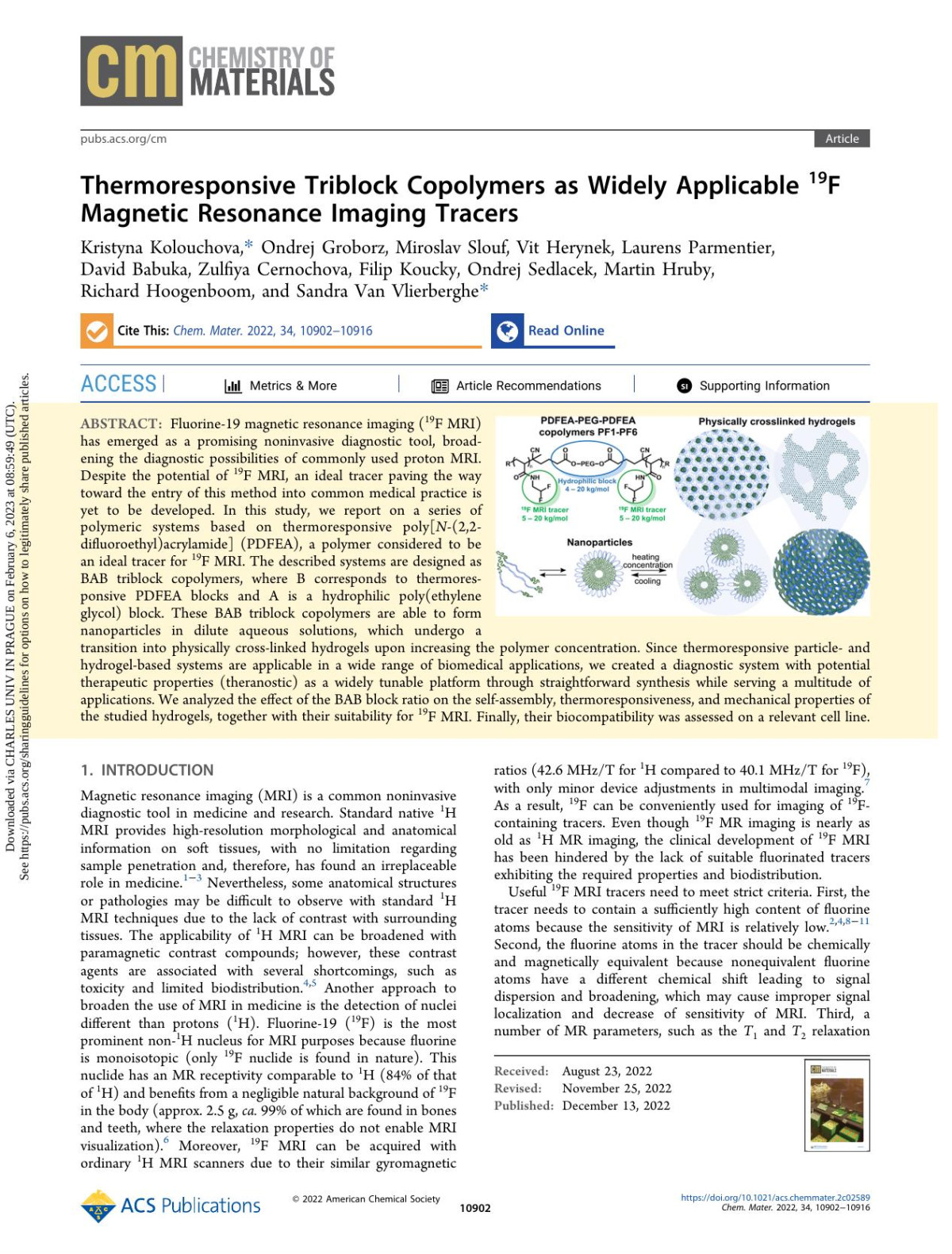

Most ebook files are in PDF format, so you can easily read them using various software such as Foxit Reader or directly on the Google Chrome browser.
Some ebook files are released by publishers in other formats such as .awz, .mobi, .epub, .fb2, etc. You may need to install specific software to read these formats on mobile/PC, such as Calibre.
Please read the tutorial at this link: https://ebookbell.com/faq
We offer FREE conversion to the popular formats you request; however, this may take some time. Therefore, right after payment, please email us, and we will try to provide the service as quickly as possible.
For some exceptional file formats or broken links (if any), please refrain from opening any disputes. Instead, email us first, and we will try to assist within a maximum of 6 hours.
EbookBell Team

0.0
0 reviewsChem. Mater. 2022, 34, 24, 10902–10916
DOI 10.1021/acs.chemmater.2c02589
Fluorine-19 magnetic resonance imaging (19F MRI) has emerged as a promising noninvasive diagnostic tool, broadening the diagnostic possibilities of commonly used proton MRI. Despite the potential of 19F MRI, an ideal tracer paving the way toward the entry of this method into common medical practice is yet to be developed. In this study, we report on a series of polymeric systems based on thermoresponsive poly[N-(2,2-difluoroethyl)acrylamide] (PDFEA), a polymer considered to be an ideal tracer for 19F MRI. The described systems are designed as BAB triblock copolymers, where B corresponds to thermoresponsive PDFEA blocks and A is a hydrophilic poly(ethylene glycol) block. These BAB triblock copolymers are able to form nanoparticles in dilute aqueous solutions, which undergo a transition into physically cross-linked hydrogels upon increasing the polymer concentration. Since thermoresponsive particle- and hydrogel-based systems are applicable in a wide range of biomedical applications, we created a diagnostic system with potential therapeutic properties (theranostic) as a widely tunable platform through straightforward synthesis while serving a multitude of applications. We analyzed the effect of the BAB block ratio on the self-assembly, thermoresponsiveness, and mechanical properties of the studied hydrogels, together with their suitability for 19F MRI. Finally, their biocompatibility was assessed on a relevant cell line.